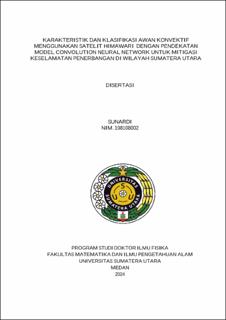| dc.description.abstract | Forecasting rainfall events, such as hefty rainfall, as an early warning is an important
component in hydrometeorological disaster mitigation and aviation areas. Improving aviation
safety depends on the weather conditions of a region. In aviation, weather factors, especially
convent clouds, will have a major impact on flight safety in Indonesia. This study aims to
look at the forecast of mesoscale heavy rainfall events in the airport area operating in North
Sumatra by analyzing the characteristics of convective system phenomena that produce
mesoscale heavy rainfall in the North Sumatra Airport area and the potential for turbulence.
The approach is carried out with AI technology, namely the CNN model in the
characterization of convective clouds that can detect CB clouds and potential turbulence in
the flight area to improve flight safety. The results showed that the analysis of weather
parameters from the WRF model seems to be able to show indications of potential
convective cloud growth, but accurate and thorough analysis capabilities are needed. The
presence of negative vertical velocity, positive vorticity, convergence, and moist air are signs
of potential convective cloud growth. Turbulence symptoms were identified from the 1,000-
foot layer (FL010) to 49,000 feet (FL490) based on turbulence criteria with Bulk Richardson
(Ri) values from 2016 to 2018. CNN approach, the percentage frequency of strong
convective turbulence symptoms generally occurs in the FL010, FL030 layers, and some in
the FL410, FL450, and FL 490 layers. The results of this study depict turbulence that can
also occur in the middle layer, at an altitude of 3100 ft to 4000 ft with weak convective. | en_US |


